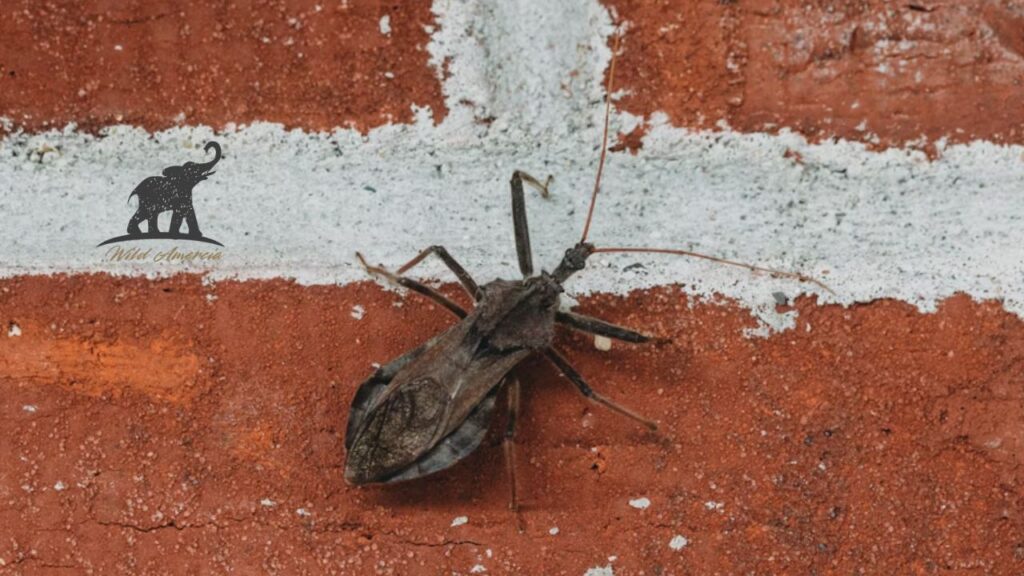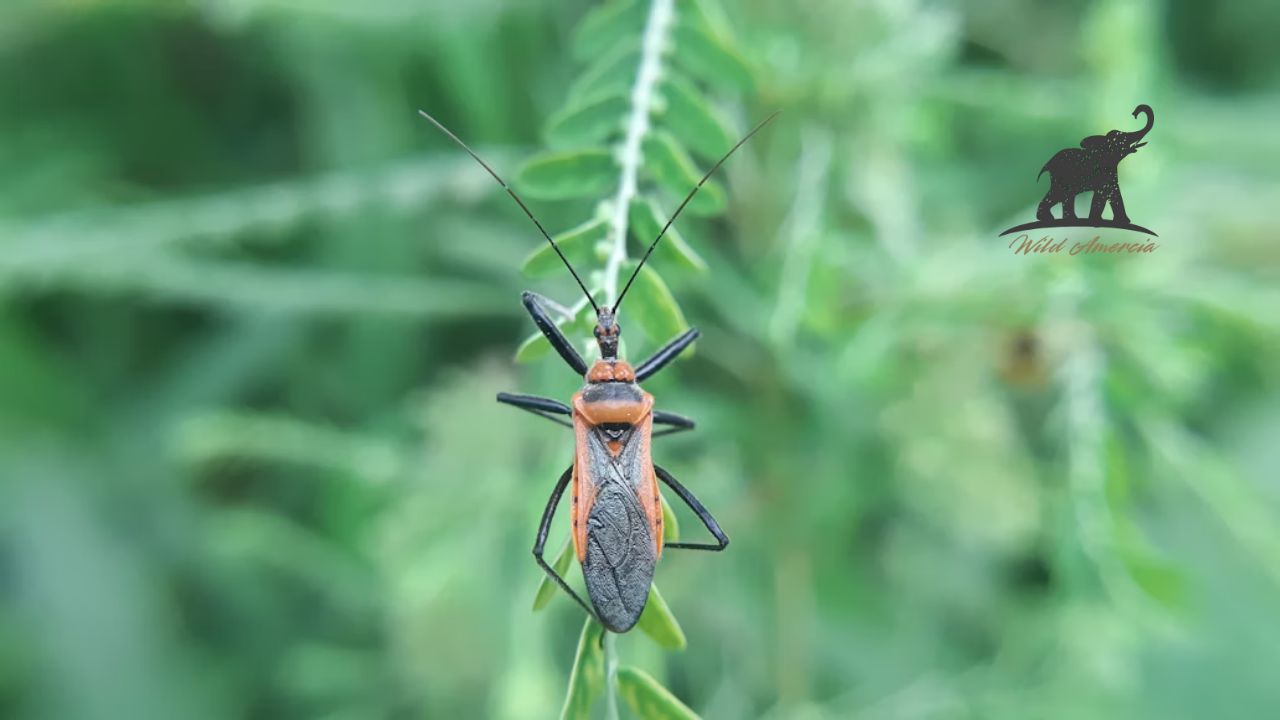When you spot a large, dark-colored insect in your home, it’s easy to feel a jolt of panic. The debate over kissing bug vs assassin bug is a common one, as these insects look strikingly similar. However, understanding their differences is crucial for your peace of mind and your family’s safety. While both belong to the same insect family, one is a harmless garden helper, and the other poses a serious health risk.
This guide will break down the critical distinctions in the kissing bug vs assassin bug comparison. You’ll learn how to identify each, understand their behaviors, and know when to be concerned. We’ll explore their habitats, diets, and the significant health implications associated with the kissing bug.
Quick Comparison: Kissing Bug vs Assassin Bug
To get started, here’s a simple table highlighting the key differences. This is your go-to reference for a quick identification in the kissing bug vs assassin bug dilemma.
| Feature | Kissing Bug (Triatomine Bug) | Assassin Bug (Reduviidae Family) |
| Scientific Name | Triatoma species | Reduviidae family |
| Appearance | Cone-shaped head, thin straight proboscis, often has orange or red markings on abdomen. | Varied shapes, but many have a thicker, curved proboscis tucked under the head. |
| Diet | Blood from mammals, birds, reptiles. | Other insects (aphids, caterpillars). |
| Habitat | Near animal nests, under porches, in woodpiles, sometimes indoors. | Gardens, fields, and anywhere insects are plentiful. |
| Behavior | Nocturnal, attracted to light and carbon dioxide from breathing. | Generally diurnal (active during the day), predatory. |
| Health Risk | High. Can transmit Chagas disease. | Low. Can deliver a painful bite but doesn’t transmit disease. |
Unpacking the Great Debate: Kissing Bug vs Assassin Bug
At first glance, these two bugs can seem identical. They are both members of the Reduviidae family, which contains over 7,000 species. This shared heritage is why the kissing bug vs assassin bug confusion is so widespread. However, only a small subfamily, the Triatominae, or kissing bugs, feed on blood and pose a threat to humans.

The vast majority of assassin bugs are actually beneficial predators in your garden. They act as natural pest control, hunting down aphids, caterpillars, and other insects that damage plants. The critical difference in the kissing bug vs assassin bug matchup lies in their mouthparts and feeding habits.
Identifying a Kissing Bug: What to Look For
Kissing bugs have earned their name from a deeply unsettling habit: they often bite humans around the face and lips while they sleep. They are drawn to the carbon dioxide we exhale.
Appearance and Physical Traits
A key factor in the kissing bug vs assassin bug identification is the head and mouth. Kissing bugs have a distinct, elongated, cone-shaped head. Their proboscis (sucking mouthpart) is thin, straight, and sticks out from the front of their head. It’s not designed for piercing tough insect exoskeletons but for delicately finding a blood vessel.
Most kissing bugs in the United States are about 0.5 to 1 inch long. They typically have a dark brown or black body, often with a border of reddish or orange spots along the edge of their abdomen. This pattern can sometimes cause them to be mistaken for boxelder bugs, but the head shape is the real giveaway. The ongoing kissing bug vs assassin bug discussion often hinges on these subtle visual cues.
Habitat and Behavior
These nocturnal pests hide during the day in dark, sheltered places. Outdoors, you might find them in woodpiles, under loose bark, or in animal burrows. Unfortunately, they can also infest homes, hiding in wall voids, under mattresses, or in cracks and crevices. The struggle to distinguish kissing bug vs assassin bug becomes urgent when one is found inside the home.
The Dangers of the Kissing Bug: Chagas Disease
The most frightening aspect of the kissing bug vs assassin bug debate is the health risk. Kissing bugs are vectors for Trypanosoma cruzi, the parasite that causes Chagas disease. The CDC estimates that around 300,000 people in the U.S. have Chagas disease, with most infections acquired in Latin America.
Here’s the truly alarming part: the infection isn’t transmitted through the bite itself. After feeding, the bug often defecates on the person’s skin. If the feces, which contain the parasite, are accidentally rubbed into the bite wound or a mucous membrane (like the eye or mouth), the person can become infected. This transmission method is a grim but vital detail in understanding the kissing bug vs assassin bug threat.
Chagas disease has two phases. The acute phase can be mild, with symptoms like fever, fatigue, and swelling at the bite site. Many people don’t even realize they’re sick. The chronic phase, however, can develop years later and cause severe cardiac and intestinal complications, which can be life-threatening. This long-term danger makes the kissing bug vs assassin bug distinction a serious matter.
Identifying an Assassin Bug: The Garden’s Guardian
Now, let’s turn to the other side of the kissing bug vs assassin bug equation. Most assassin bugs are not something to fear. They are your allies in the garden.

Appearance and Physical Traits
While they come in many shapes and sizes, a common feature of many assassin bugs is their proboscis. Unlike the kissing bug’s delicate, straight straw, the assassin bug has a thicker, curved proboscis that it keeps tucked beneath its head in a groove. When it’s time to strike, this formidable weapon unfolds to inject lethal saliva into its prey.
Their body shape is also more varied. Some are slender, while others, like the wheel bug, have a prominent, gear-like crest on their back. Their coloration can range from black and brown to vibrant shades of orange and red, which adds to the kissing bug vs assassin bug confusion.
Habitat and Behavior
Assassin bugs are found wherever their food is. You’ll see them in gardens, on flowers, and in agricultural fields, actively hunting during the day. They are not interested in you or your pets. Their focus is solely on other insects. This behavioral difference is a major clue when deciding between a kissing bug vs assassin bug.
While they generally leave humans alone, an assassin bug will bite if it feels threatened or is handled carelessly. The bite is notoriously painful—often described as feeling like a bee sting—but it is not medically significant. They do not transmit diseases. This makes the stakes in the kissing bug vs assassin bug scenario much lower if you’re dealing with a common assassin bug.
User Experiences: Reports from the Field
Online gardening and pest control forums are filled with discussions about the kissing bug vs assassin bug topic. Many homeowners share their experiences, which can be a valuable resource.
One user on a pest control forum shared, “I found a scary-looking bug on my porch screen and freaked out, thinking it was a kissing bug. I posted a picture, and someone quickly pointed out the thick, curved beak. It was a relief to know it was just an assassin bug, probably hunting the spiders on my porch.” This user’s rating for their experience was “relieved and educated.”
Another story had a more concerning outcome. A resident from Texas wrote, “We’ve had several kissing bugs in our house over the years. We live near a wooded area. We had our home professionally treated and sealed all the cracks we could find. The constant worry is stressful.” This highlights the emotional toll and importance of correctly identifying the pest in the kissing bug vs assassin bug dilemma.
What Should You Do if You Find One?
Your response depends heavily on which bug you’ve found. The challenge of kissing bug vs assassin bug identification is the first step.
If you suspect you’ve found a kissing bug, do not crush or touch it with your bare hands. This can expose you to the T. cruzi parasite. Instead, carefully trap the insect in a container and seal it. You can fill the container with rubbing alcohol to kill it or freeze it.
You can then contact your local university extension office or health department for help with identification. Some institutions, like Texas A&M University’s Kissing Bug & Chagas’ Disease outreach program, accept specimens from the public for research. Getting a positive ID is the most important outcome in any kissing bug vs assassin bug encounter.
If you’ve identified an assassin bug in your garden, the best course of action is to leave it alone. It’s providing a valuable service by controlling pest populations. Correctly navigating the kissing bug vs assassin bug situation means protecting these beneficial insects. The debate between kissing bug vs assassin bug is often one of friend vs foe. Recognizing the kissing bug vs assassin bug difference protects both you and the ecosystem. For every kissing bug vs assassin bug query, the answer has real consequences. The kissing bug vs assassin bug distinction is vital knowledge.
Prevention and Control
Preventing kissing bugs from entering your home is key. Seal any cracks or gaps in your foundation, walls, and around windows and doors. Use screens on all windows and doors and keep them in good repair.
Reduce hiding spots near your house by moving woodpiles, brush, and rock piles away from the foundation. Since they are attracted to light, turn off outdoor lights when not needed. These steps are universal, but especially critical if you live in an area where kissing bugs are common. Understanding the kissing bug vs assassin bug helps you focus your efforts. Knowing the nuances of kissing bug vs assassin bug empowers you to act correctly. This kissing bug vs assassin bug knowledge is your first line of defense. The kissing bug vs assassin bug conversation is one every homeowner should have.
Frequently Asked Questions (FAQs)
Q: Are all assassin bugs harmless to humans?
A: While the vast majority are harmless (aside from a painful bite if provoked), the kissing bug is technically a type of assassin bug. So, when people ask about kissing bug vs assassin bug, they are really comparing a dangerous subfamily to the rest of its relatively harmless relatives.
Q: I was bitten by a bug that looks like one of these. What should I do?
A: If you can, safely capture the bug for identification. An assassin bug bite will be painful but will subside, much like a bee sting. If you suspect it was a kissing bug, and especially if you feel unwell or notice swelling, consult a healthcare provider. Do not take any chances when dealing with a potential kissing bug vs assassin bug situation.
Q: Where are kissing bugs most common in the United States?
A: Kissing bugs are primarily found in the southern half of the United States, particularly in states like Texas, New Mexico, and Arizona. However, they have been reported in over 28 states. This geographic spread makes the kissing bug vs assassin bug topic relevant nationwide.
Q: Can my pets get Chagas disease?
A: Yes, dogs can also become infected with Chagas disease. The disease can cause severe heart problems in dogs. If you live in an endemic area, talk to your veterinarian about protecting your pets. This adds another layer to the importance of the kissing bug vs assassin bug issue.
Admin Recommendation
Cottonmouth Snakes in North Carolina (NC): Key Facts
The Fascinating World of Arctic Fox Fur












